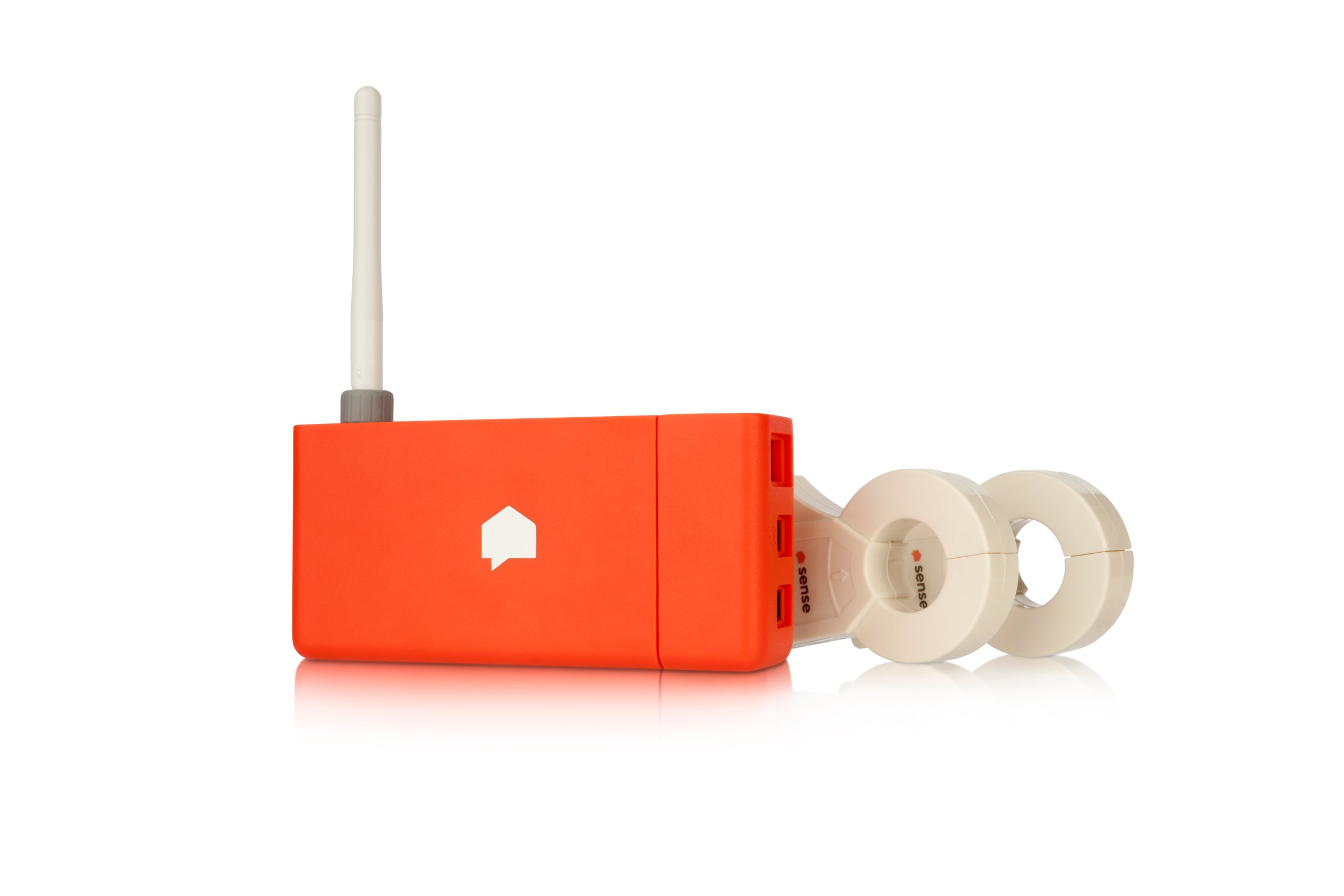
My electrician had his doubts — and I have to admit that I did, too. As he looped a pair of clamps around my home’s main electrical lines, he told me the smart home gadget I hired him to install inside my breaker box wasn’t anything more than a voltage meter.
“I could get you one of these for a fraction of the price,” he said. “And it would have an LCD display, too.”
In hindsight, his lack of faith in this newfangled device was misplaced. A small, orange brick with a white antenna sticking out of it, the $249 Sense home energy monitor doesn’t look all that special. But it differs from conventional voltage meters in two ways. First, it connects to your home’s Wi-Fi network, meaning it can relay your home’s energy usage data into the cloud for some pretty heady number crunching. And second, that information is then relayed to apps on your Android or iOS device, where you can get a comprehensive view of your home’s electrical activity.
“Think of it like the sensing layer of the future smart home,” says Mike Phillips, Sense’s founder and CEO.
I’m not typically bullish on any single piece of hardware. But after using the Sense, I can confidently say that after you install it, it will eventually become the smartest gadget in your home — and help you save money to boot.
With the help of an electrician (which the company recommends), connecting my Sense unit to my Wi-Fi network was a cinch. As soon as the app detected the breaker box-embedded sensor, it began collecting all the energy-use data my house was generating. But it took time before the unit gave me useful information. That’s because the Sense analyzes the electricity usage of every plugged-in thing in your home, identifies them, and then gives you all sorts of details about how they, and your home, operate.
Phillips explains how the Sense works like this: First, the clamps around the main wire measure the amount of current flowing through the house. Plugging the sensor into two free breakers power the box and lets it take its measurements. With the current and voltage calculated, Sense can determine the total wattage, or power, coming into your home, just like a conventional power meter.
But Sense measures the power much more frequently than a conventional meter — a million times a second compared to about once every 15 minutes. All that sampling helps the Sense detect and track individual appliances in your home. Because your refrigerator draws power in a different way than your coffee pot, the Sense is, over time, able to differentiate between the two (and your other gear as well.)
Over the course of a month, the Sense discovered more than 15 different appliances in my house, distinguishing between washers and water heaters, microwaves and ovens. By and large, the system correctly identified and named my devices. That’s a good thing, because you can’t manually enter your own gadgets into the system. However, you can correct and rename appliances once Sense has detected and added them to your home’s profile, which is how I can tell the difference between when my kitchen or beer fridge kicks on.
(Gifts: The 100 Most Influential Images of All Time)
Sense’s service is in its early days, but it’s impressive nonetheless. And as more people use the sensor, the company’s software will get smarter. “We’re building up this database of signatures of all these different things,” says Phillips. “In some cases, we can go down to the make and model.”
Phillips says he started Sense with an eye towards energy efficiency. But keeping a close eye on your electricity usage can help save you money, too. Sense users can go back and look at how often any particular appliance ran in the course of a month, week, or day. By checking the electrical usage of a given gadget, you can find ways to save on your electric bill.
You can also configure Sense to send alerts for each device it detects. On a practical level, that means you can get notifications for home security-related events like the garage light turning on. I set it up to notify me when my dryer turns off, making it helpful on laundry day. Sure, there are connected washers and dryers that do this, but my dumb laundry machines are just three years old. I’m not going to upgrade just for smartphone notifications.
After a month of chewing on my home’s data, the Sense gave me some revealing insight into how my home works. For instance, our loud bathroom fan, which sometimes gets left on all day, uses roughly the same amount of power as our microwave (which runs all of eight minutes per day). Our electric heat pump, which I feared made our energy bill soar, isn’t as expensive to run as I thought. And the biggest energy hog in the house isn’t the dryer or dishwasher, which are constantly running to keep our family of four in operation. It’s the hot water heater, which, according to Sense, represents nearly half of our energy usage. A quick look at the tags revealed that our 12-year-old tank is probably due to be replaced sometime in the near future. It’s these kinds of insights that make it truly worthwhile — and economic — to have a smart house.
More Must-Reads from TIME
- Cybersecurity Experts Are Sounding the Alarm on DOGE
- Meet the 2025 Women of the Year
- The Harsh Truth About Disability Inclusion
- Why Do More Young Adults Have Cancer?
- Colman Domingo Leads With Radical Love
- How to Get Better at Doing Things Alone
- Michelle Zauner Stares Down the Darkness
Contact us at letters@time.com